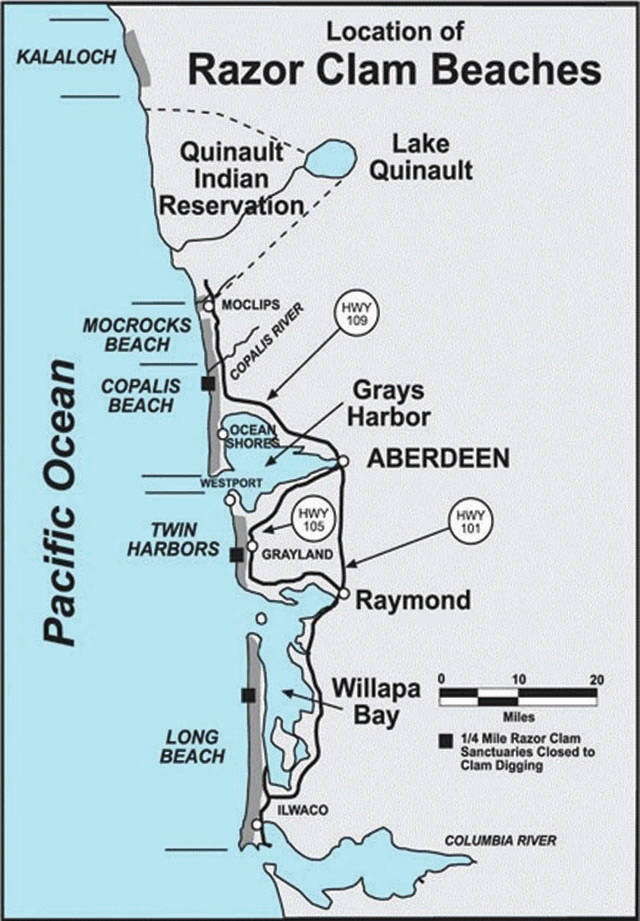All of Washington’s ocean beaches will remain closed to razor clam digging for the rest of the season after tests in the Mocrocks area found elevated toxin levels.
Test results on razor clams dug at both Long Beach and Twin Harbors beaches indicate levels of domoic acid exceed the threshold of 20 parts per million set by state public health officials, said Dan Ayres, coastal shellfish manager for the Department of Fish and Wildlife.
“Based on the most recent toxin tests, razor clams will not be safe to eat for the remainder of the month at Long Beach or Twin Harbors,” Ayres said.
The state routinely closes the razor clam fishery by the end of May when the clams begin to spawn.
The next season will begin in the fall, when the older clams have recovered from spawning and a new generation begins to grow beneath the sand.
An initial toxin test last week indicated clams at Mocrocks were safe to eat, a second set of clams tested this week found that domoic acid levels now exceed the state public health threshold, said Ayres. Two rounds of testing are required under state health rules before WDFW will open a beach to digging.
“We had hoped to have one last opening at Mocrocks this season,” Ayres said. “Unfortunately, toxin levels are on the rise and are unlikely to drop before the end of the month, when the clams begin to spawn and the beaches are closed to digging.”
“We’ll conduct our annual assessment of clam populations over the summer and hope to open beaches again in September or October,” Ayres said.
More information about domoic acid, as well as current levels at all ocean beaches, can be found online at http://wdfw.wa.gov/fishing/shellfish/razorclams/domoic_acid.html.



